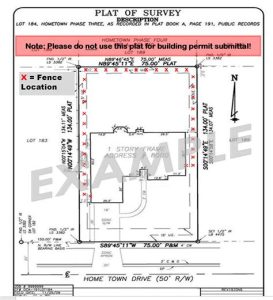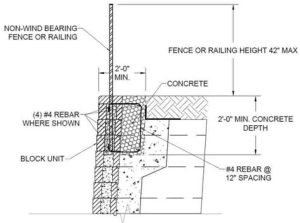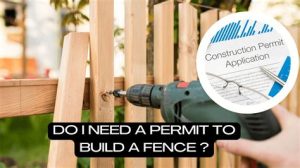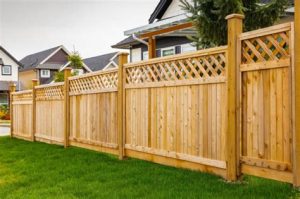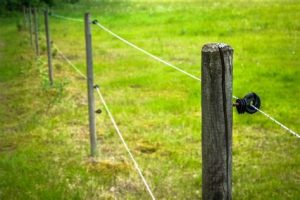When it comes to installing metal fence posts, the choices you make can significantly impact the longevity and functionality of your fence. Whether you’re looking to enhance security, define boundaries, or add aesthetic appeal to your property, understanding the nuances of installation is crucial. This article will guide you through essential considerations, helping you navigate critical factors such as soil type, post material, design priorities, depth and spacing, along with the necessary local regulations and permits. By arming yourself with this knowledge, you’ll be equipped to make informed decisions that ensure a sturdy and durable installation that meets your unique needs. Let’s dive in and explore what you should look for to achieve the best results for your fencing project.
What Should You Consider for Soil Type and Ground Stability?
When deciding how to install metal fence posts, understanding the type of soil and the stability of the ground is crucial for ensuring a long-lasting and sturdy fence. Here are the key factors to consider:
1. Soil Type: Different soil types can affect the stability of your fence posts. Conduct a soil test to identify whether you have sandy, clay, or loamy soil. Each type has different drainage and compaction characteristics that directly impact how well the posts will hold.
2. Drainage Capability: Look for signs of poor drainage in your area. Waterlogged soil can compromise the integrity of the fence posts. Ensure that the soil allows water to flow through it rather than pool around the base of the posts.
3. Ground Stability: Assess the ground stability in the area where you plan to install the fence. Look for any signs of erosion, shifting soil, or movement, as these can severely impact the fence’s durability.
| Soil Type | Characteristics | Impact on Fence Installation |
|---|---|---|
| Sandy | Loose, well-draining | May require deeper posts to prevent shifting |
| Clay | Heavy, retains moisture | Prone to shifting; requires proper drainage |
| Loamy | Balanced mixture, good drainage | Generally ideal for fence installation |
By closely examining these factors, you can determine what should be done to ensure that your fence posts are installed correctly, providing both structural support and longevity. Understanding your soil type and ground stability will ultimately help you choose the proper installation technique and materials, setting a solid foundation for your fencing project.
What Should You Check Regarding Post Material and Durability?
When selecting fence posts, understanding what should be prioritized in terms of material and durability is crucial. The longevity and stability of your metal fence largely depend on the type of materials used. Here are some key factors to consider:
- Material Composition: The most common metals for fence posts are galvanized steel, aluminum, and wrought iron. Galvanized steel is often preferred due to its rust-resistant coating, which significantly extends its life outdoors.
- Thickness and Gauge: Thicker posts often provide better durability and resistance to bending or warping. Ensure that the fence posts meet the industry standards regarding gauge, as this will directly affect their strength.
- Coatings and Treatments: Protective coatings can enhance durability. Look for posts that have been powder-coated or treated to withstand rust, corrosion, and harsh weather conditions.
- Warranty and Manufacturer Reputation: Researching the warranty offered by manufacturers can give you insight into the expected lifespan of the posts. A trusted brand usually indicates higher quality materials and better durability.
- Local Climate Conditions: Consider the specific environmental conditions of your location. If you live in an area prone to extreme weather, choose materials that can withstand those conditions effectively.
By evaluating these aspects, you can make an informed decision about what should be selected for post material and durability, ultimately ensuring the long-term effectiveness of your metal fence.
What Should Be Your Priority in Fence Design and Purpose?
When considering how to install metal fence posts, one of the most crucial aspects is defining the overall what should guide your fence design and purpose. This foundational step influences various other factors, including material choice, installation methods, and compliance with local regulations.
First, clarify the primary purpose of your fence. Are you looking for privacy, security, aesthetics, or perhaps a combination of these? Understanding your needs will help you determine the height, style, and configuration of your fence. For example, if security is your main focus, a tall, solid fence might be preferable, while a decorative metal fence could be suitable for enhancing the visual appeal of your garden.
Additionally, consider the surrounding environment and how it impacts the fence’s function. Factors such as weather conditions, landscape features, and neighboring properties can affect your design choices. For instance, in areas prone to high winds, a more robust design may be required to withstand harsh conditions.
Always ensure that your fence design aligns with your property’s layout and any existing structures. This foresight will help you avoid potential conflicts with other installations and provide a cohesive look to your property.
What Should You Evaluate When Planning for Depth and Spacing?
Planning the depth and spacing of metal fence posts is crucial for ensuring the structural integrity and longevity of your fence. Here are some important considerations to keep in mind:
- What Should be the Correct Depth:
- What Should Be the Spacing Between Posts:
- What Should You Consider for Ground Conditions:
- What Should Be Taken Account of for Fencing Purpose:
Typically, the recommended depth for setting metal fence posts is about one-third of the total height of the post above ground. For instance, if you have a 6-foot tall fence, you should aim for a 2-foot deep hole. This depth helps provide stability, especially in areas with high winds or adverse weather conditions.
The spacing between your metal posts largely depends on the type of fence and the materials used. Generally, a standard gap is 6 to 8 feet between posts. However, heavier materials like solid panels may require closer spacing to ensure that the fence remains secure and does not sag over time.
Evaluate the soil and ground conditions before deciding on post depth and spacing. If you’re in sandy or loose soil, you may need to dig deeper or use concrete to secure the posts. In contrast, clay or rocky soils may not require as deep a hole but can present challenges for digging.
If you’re installing a fence for security purposes, consider the maximum height and the potential need for additional support. In such cases, shorter spacing may be necessary to prevent any potential breach.
Evaluating these factors carefully will help you create a fence that not only meets your aesthetic desires but is also durable and functional. Remember that what should drive your decisions are the specific requirements of your project and the environment in which you’re working.
What Should You Know About Local Regulations and Permits?
When it comes to installing metal fence posts, understanding local regulations and permits is crucial for a successful project. Depending on your location, specific zoning laws or homeowners’ association (HOA) guidelines might dictate the type of fencing you can install, its height, and even the materials used. Here’s a breakdown of what you should know:
1. Zoning Laws: Local authorities often have zoning laws that affect fence installation. These laws can determine how high a fence may be, whether it can be solid or see-through, and the overall aesthetics that align with the neighborhood. Always check these regulations beforehand to avoid fines or required modifications post-installation.
2. Building Permits: In some areas, you might need a permit before you can legally install a fence. It’s important to contact your local government or building department to inquire whether a permit is necessary for your fencing project. If a permit is required, they will provide you with the guidelines and application process.
3. HOA Regulations: If you live in a community governed by a homeowners’ association, there may be additional regulations in place. These could include aesthetic guidelines and specific restrictions on materials and colors. Be sure to review your HOA’s rules to ensure compliance.
4. Neighbor Notification: Some jurisdictions require you to notify your neighbors before installing a fence, especially if it’s located on or near property lines. Even if it’s not mandated, discussing your plans with neighbors can help maintain a good relationship and avoid potential disputes.
5. Boundary Surveys: Know the precise property lines before installing your fence. If there’s a dispute over boundaries, it could lead to legal issues or the need to move the fence. Hiring a land surveyor might be necessary to determine accurate boundaries.
By ensuring you are well-informed about local regulations and permits, you can avoid common pitfalls and ensure your fence installation process goes smoothly. Always prioritize compliance to protect your investment and maintain good relations with neighbors and local authorities.
Frequently Asked Questions
What are the main types of metal fence posts?
The main types of metal fence posts include galvanized steel, aluminum, and wrought iron, each with their own benefits in terms of durability and aesthetic appeal.
How do I determine the right height for my metal fence posts?
The height of your metal fence posts should be determined by the intended use of the fence, privacy requirements, and local zoning regulations.
Should I choose pre-made metal posts or custom-fabricated options?
Choosing between pre-made and custom-fabricated metal posts depends on your specific design preferences, project budget, and the level of customization you require.
What type of concrete is best for installing metal fence posts?
High-strength, quick-setting concrete is recommended for installing metal fence posts because it provides robust support and allows for faster installation.
How deep should I dig the holes for metal fence posts?
Generally, holes for metal fence posts should be dug at least one-third of the height of the post in depth, allowing for a stable and secure installation.
What considerations should I have regarding the installation location?
When installing metal fence posts, consider factors like soil type, proximity to property lines, drainage issues, and ensuring compliance with local building codes.
How can I prevent rust on metal fence posts?
To prevent rust on metal fence posts, apply a protective coating or paint, choose galvanized or powder-coated posts, and perform regular maintenance to check for any signs of wear.
